His victories in the Gallic Wars, completed by 51 BC, extended Rome's territory to the English Channel and the Rhine. These achievements granted him unmatched military power. Civil war resulted, and Caesar's victory in the war put him in an unrivalled position of power and influence.
After assuming control of government, he centralised the bureaucracy of the Republic and was eventually proclaimed "dictator in perpetuity", giving him additional authority. But the underlying political conflicts had not been resolved, and on the Ides of March (15 March) 44 BC, Caesar was assassinated by a group of rebellious senators led by Gaius Cassius Longinus, Marcus Junius Brutus, and Decimus Junius Brutus.
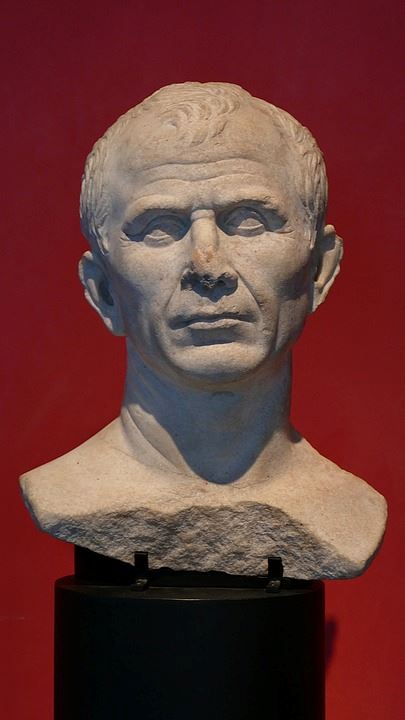
_4(0).jpg)
Reverse: Emblems of the pontificate: simpulum, aspergillum, securis (surmounted by wolf's head), and apex
Die Orientation: 10 H
Weight: 4.12 g
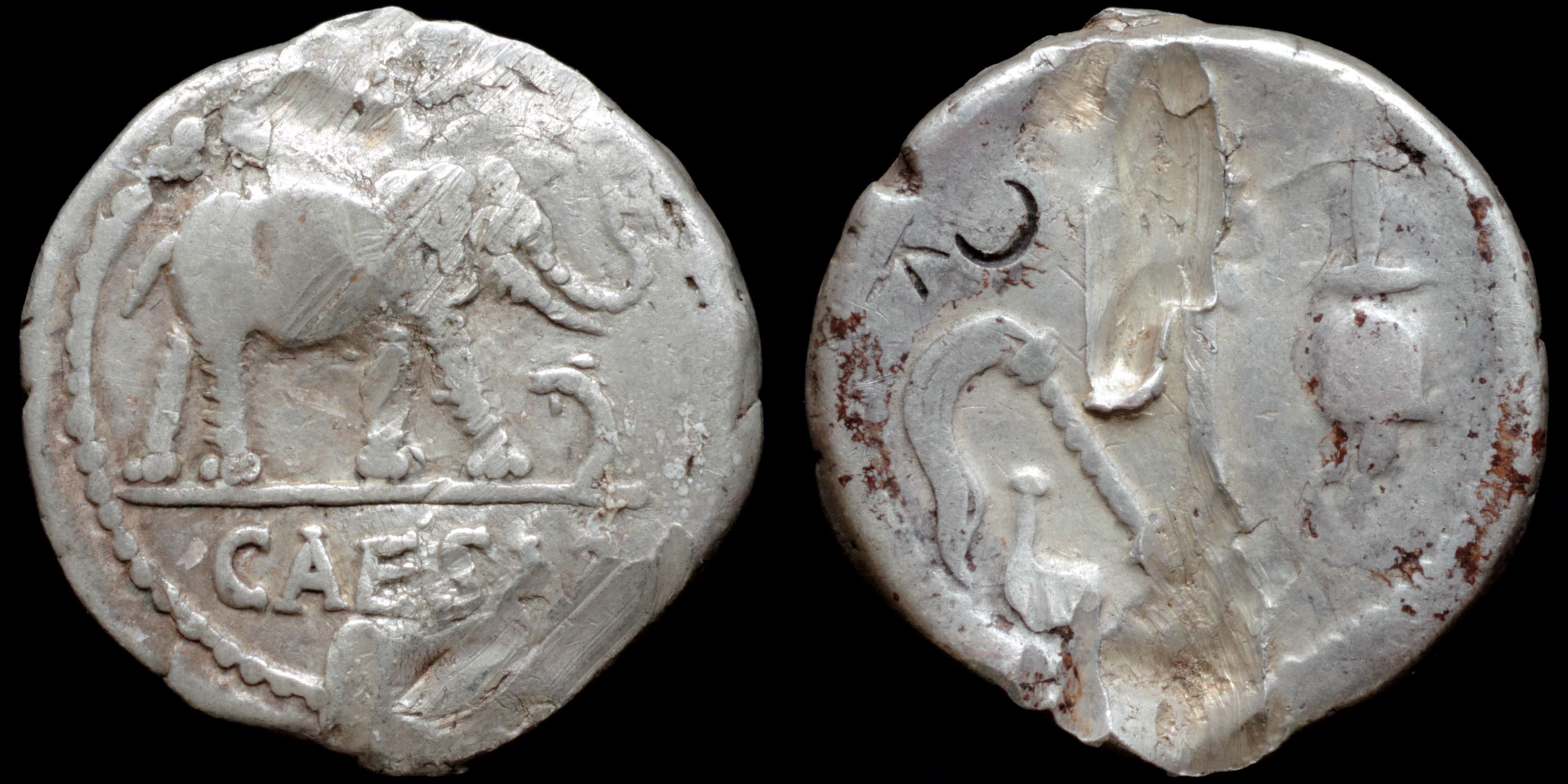
Reverse: sacrificial implements - simpulum (laddle), sprinkler, axe, apex (priest's hat)
Die Orientation: -
Weight: 4 g
moving mint (Cisalpine Gaul or Hispania). Oldschool interpretation of iconography is that elephant symbolize powerful Caesar and snake his enemies but this view must be revised. According to Harlan the Caesar's issue is reaction to the Acilius' with Salus holding snake which was in fact struck in 50 BC. Salus with snake represent health of the Republic. "Dio Cassius made it clear that the most vehement enemy of Caesar in the Senate debates of 50 was Quintus Caecilius Metellus Pius Scipio who put forward the motion that Caesar be declared a public enemy if he did not disband his troops. Caesar said that the Senate was intimated by threats from Pompey’s friends and reluctantly adopted Scipio’s proposal. Caesar put much of the blame for the civil war on Scipio who had become Pompey’s father-in-law in 52 and had shared the consulship with Pompey that year. Recounting the reasons for the civil war, Caesar was careful to avoid blaming Pompey directly and he claimed that Pompey had been led astray and corrupted (depravatum) by Caesar’s enemies who were jealous of his glory, while he himself had always promoted Pompey’s honor and dignity. …….. With a very clever, yet simple, turn on the Pompeian propaganda of Acilius’ coin, the snake has been taken from the hands of Valetudo and trampled by the Metellan elephant. Caesar showed Rome that Metellus Scipio and his supporters were the true threat to the health and safety of the Republic, the true cause of the civil war." Sacrificial implements reminds Caesar as Pontifex Maximus.
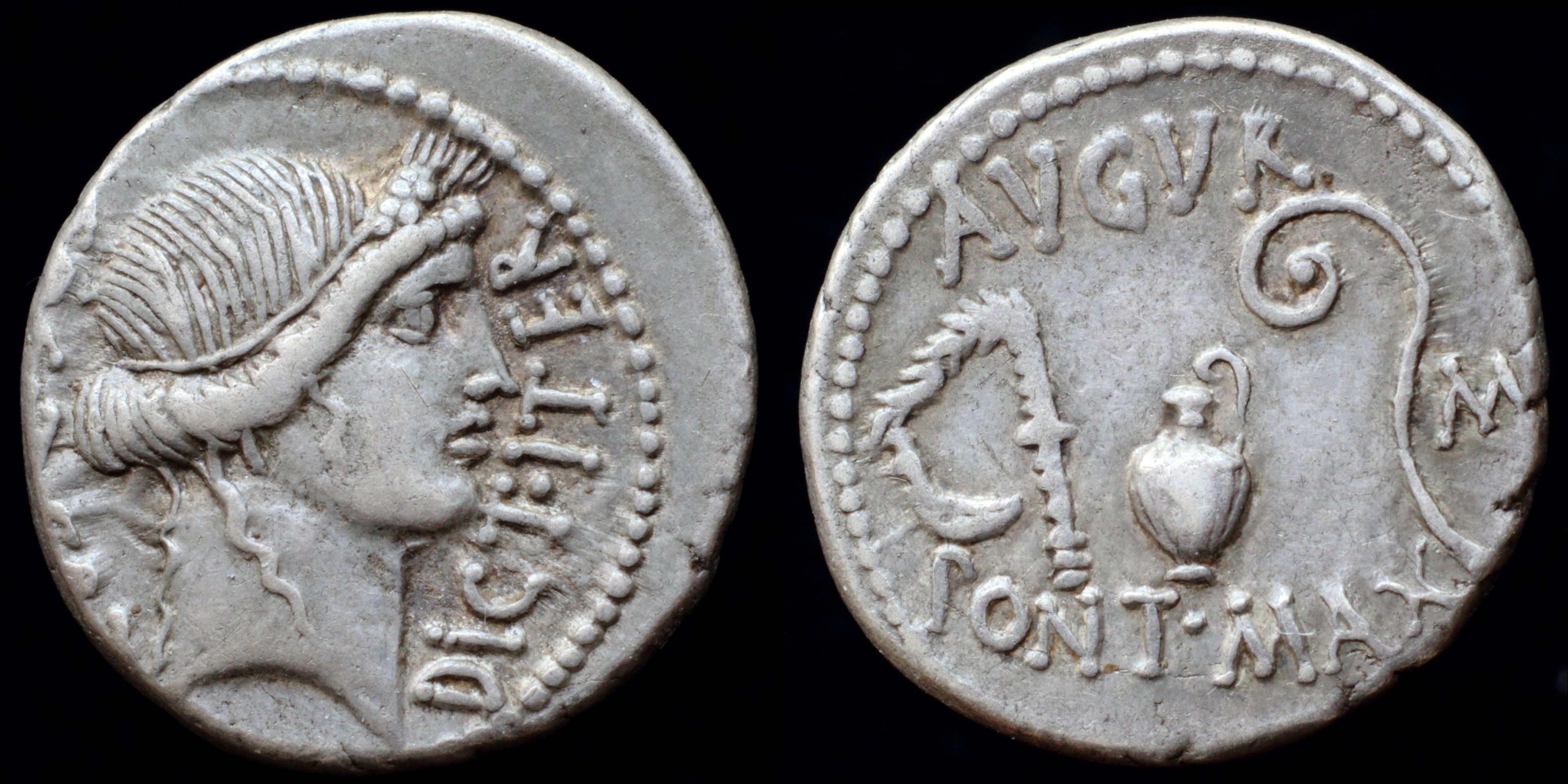
Reverse: sacrificial implements: simpulum, aspergillum, capis (jug), lituus, AVGVR / PONT·MAX / M
Die Orientation: -
Weight: 3.7 g
moving mint (Africa or Sicily). Ceres symbolizes Africa as granary of Rome. M on reverse means munus - payment for soldier's service. These coins probably served to pay Caesar's veterans after battle of Thapsus.

Reverse: Emblems of the pontificate: simpulum, aspergillum, securis (surmounted by wolf's head), and apex.
Die Orientation: 7 H
Weight: 3.82 g
.png)
Reverse: Gallic trophy, holding oval shield and carnyx; securis surmounted by wolf’s head to right
Die Orientation: -
Weight: 3.87 g
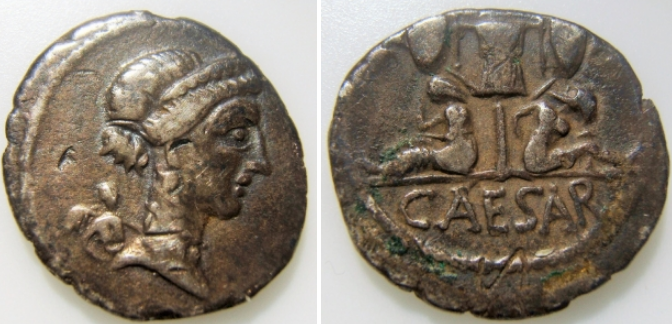
Reverse: CAESAR - Gallia and Gaulish captive seated beneath trophy of Gallic arms.
Die Orientation: 10 H
Weight: 3.46 g
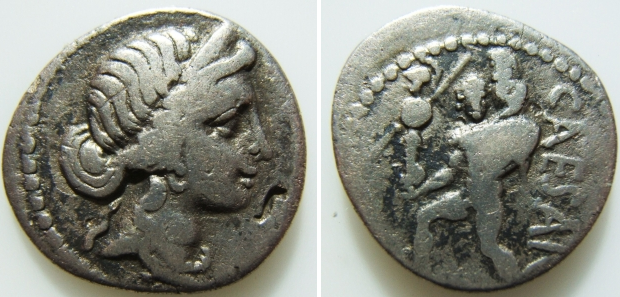
Reverse: CAESAR - Aeneas walking left, carrying Anchises and the Palladium.
Die Orientation: 6 H
Weight: 2.97 g
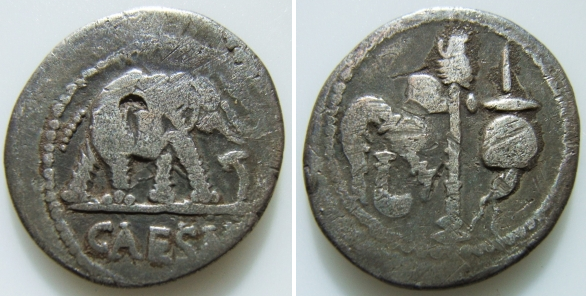
Reverse: Simpulum, sprinkler, axe and priest's hat.
Die Orientation: 3 H
Weight: 3.49 g
